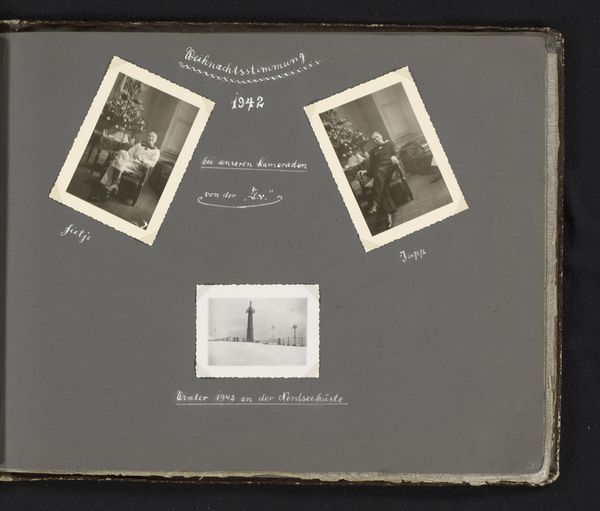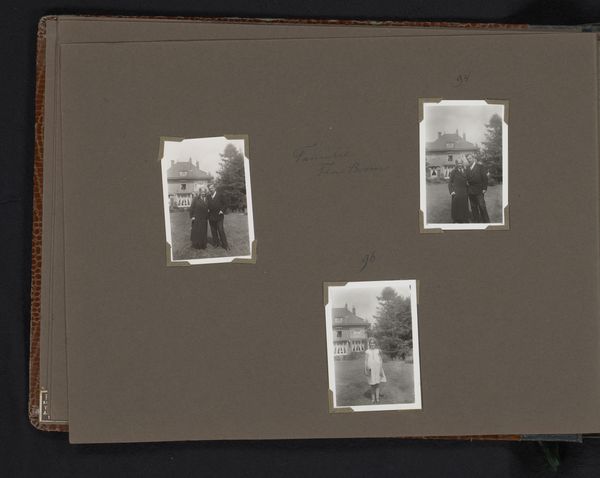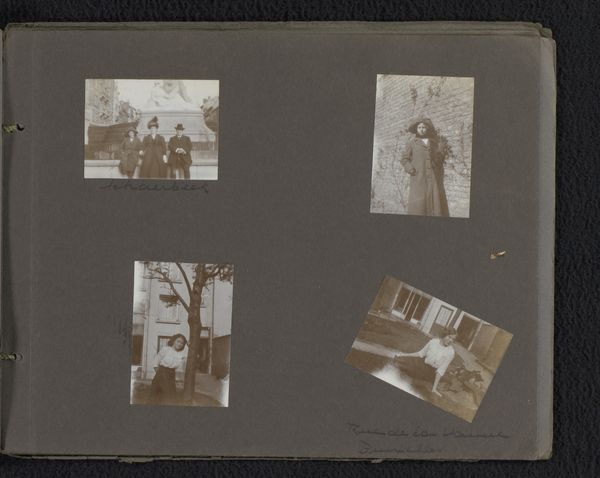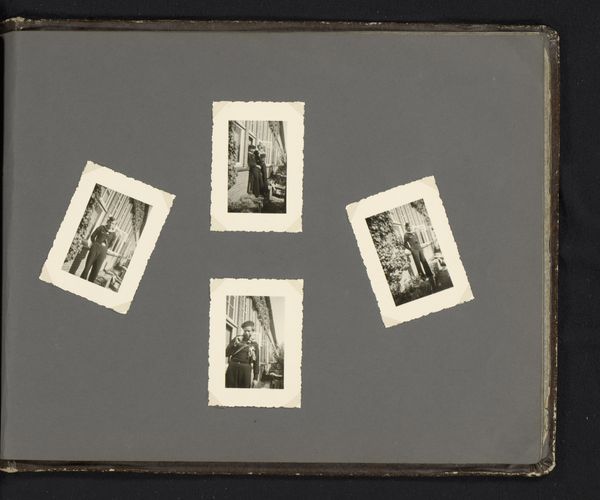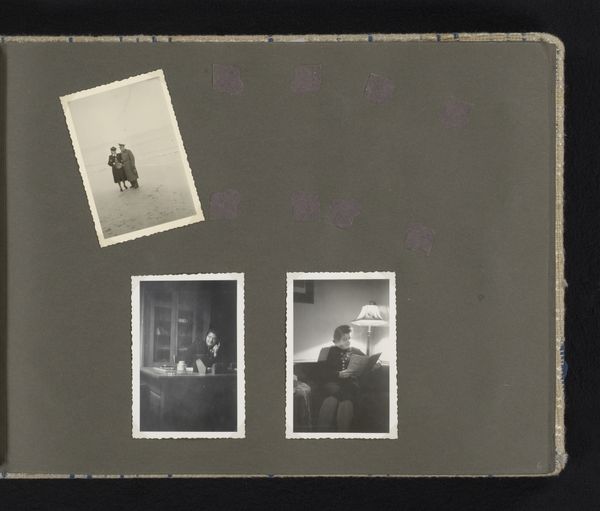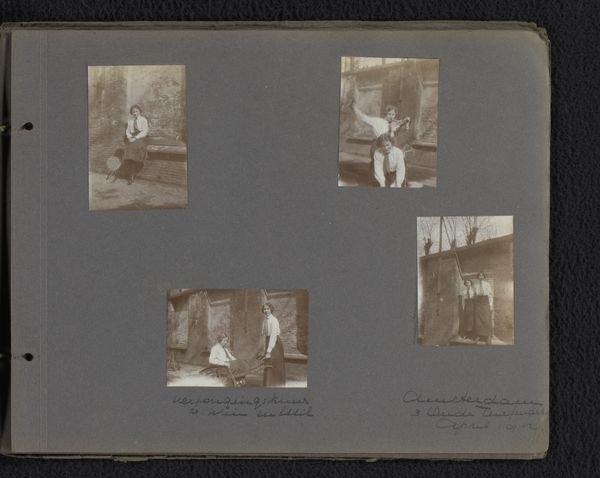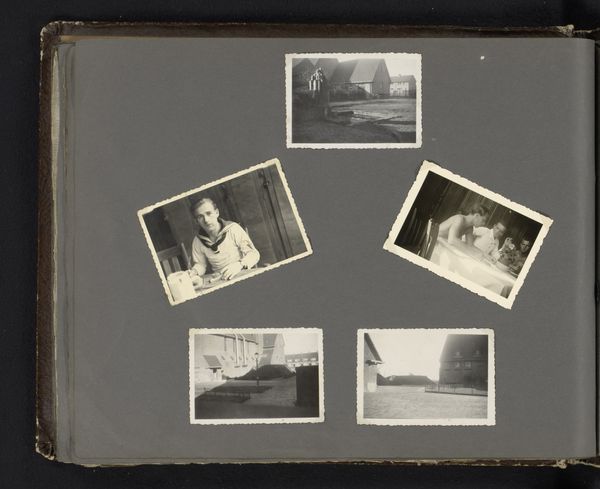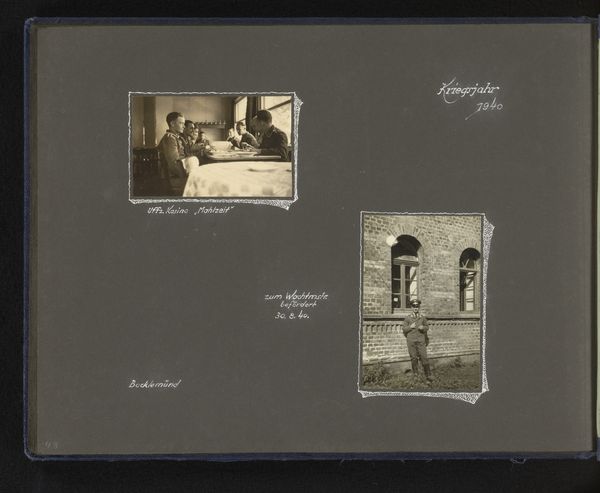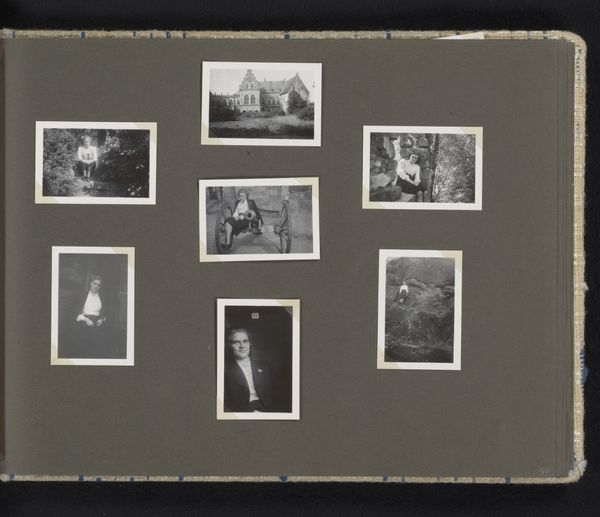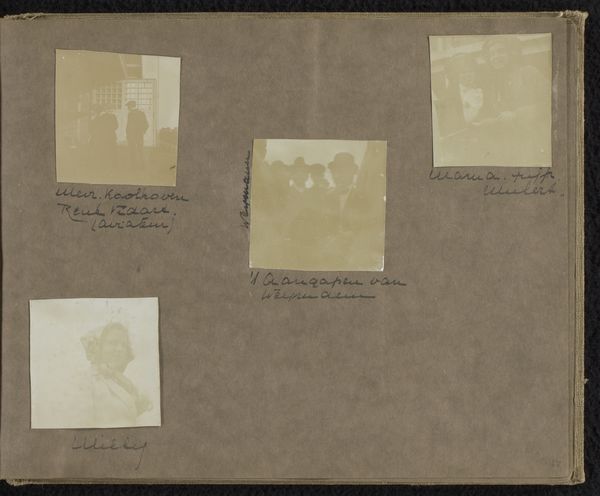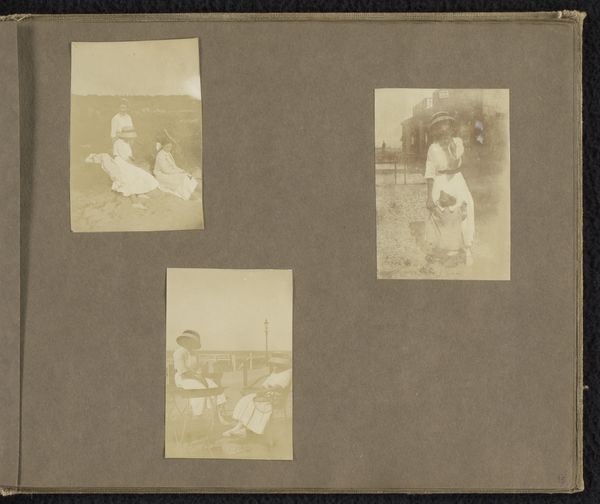
paper, photography, gelatin-silver-print, albumen-print
#
portrait
#
paper
#
photography
#
gelatin-silver-print
#
paper medium
#
albumen-print
Dimensions: height 62 mm, width 92 mm, height 272 mm, width 340 mm
Copyright: Rijks Museum: Open Domain
Editor: So, here we have a page from an album titled "Onderkomen van de matrozen in Scheveningen," which translates to "Accommodations of the Sailors in Scheveningen," believed to be from 1942. It’s a collection of albumen and gelatin silver prints on paper. The whole thing has this quiet, melancholic air about it, almost like peering into someone's private memories. What catches your eye when you look at this? Curator: It’s interesting, isn't it? For me, beyond the photographic technique, which gives it that vintage feel, it's about what isn't explicitly stated. I see young men, probably far from home, during a very turbulent time in history. Their faces, their settings...it’s all very ordinary. Like a carefully arranged stage, yet intimate. Almost dreamlike in its stillness, and with captions suggesting camaraderie and shared experiences. Do you get a sense of their stories from it? Editor: I do, actually. Especially with the handwritten annotations, it gives a glimpse into their personal lives amid this historical backdrop, although snippets of text like 'klar zum Insendgang (em Winter 1943)' feels ominous. It creates a compelling contrast, don’t you think? These happy lads, possibly looking into the abyss. Curator: Exactly! And the choice of black and white further enhances that sense of removed time, like peering through a crack in history's door. Each photo is almost a vignette, hinting at larger narratives but leaving so much unsaid. Perhaps it mirrors how these young sailors were experiencing their own lives—caught between carefree moments and looming uncertainty. It would be fascinating to learn whose album this was and how it survived the war. Editor: Definitely! I see it now. What seemed simple on the surface reveals layer upon layer of depth, almost like the ghost of a memory. Curator: Precisely. The quiet ones always have the most to say. It teaches us to truly "look" and feel for what's between the notes, doesn’t it?
Comments
No comments
Be the first to comment and join the conversation on the ultimate creative platform.
